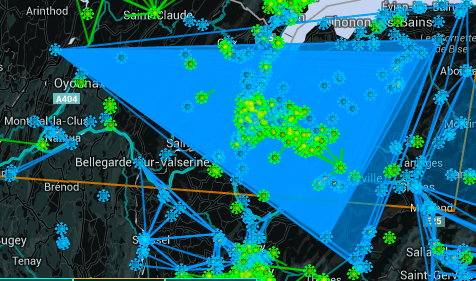Ingress Walks – A 12km path to Level 13
I stopped playing Ingress a few years ago because of how much time it requires. I have started going on Ingress walks again – a 12km path to level 13 in yesterday’s case, because I’m combining the daily walk that I would do anyway, with listening to podcasts and audiobooks, anyway.
By walking and listening to audiobooks and podcasts I am constantly learning about new things. Recently I’ve been listening to current affairs podcasts, I listened to 13 minutes to the moon, I listened to podcasts about the Swiss Watch Industry and more. Every walk is a journey in learning. I also learn about the fifty objects that made the world and more.

I also listen to books when I walk. These aren’t the most inspiring of books but four of them were free, as part of the books I get by being an audible member via Audible originals. Every walk I go on is an opportunity to learn, without feeling that I am not as productive as I could be.
According to my blog stats, I should have lead with writing about the game Ingress, which I took a break from for years, because of how much time it takes to level up, especially when you live in the countryside.
Luckily as time has progressed so has the ability to suggest and have new portals approved. A 12-kilometre walk had three or four portals. Now it has twenty or thirty. This means that during a walk in the countryside it is worth playing Ingress. Going to a polluted city is no longer required. Even country bumpkins like me can play and progress.
By having portals in the countryside it also opens up the prospect of Ingress bike rides. Last week I cycled from Nyon to Rolle, and from Rolle I went up into the vineyards and I destroyed and captured portals. My health benefited because it was a 40km bike ride with four hundred meters of climbing in between vineyards and some of these climbs are steep.
That’s where you see that cycling in Spain has its advantages. I cycled up steep inclines without suffering or worrying I wouldn’t make it. I also cycled up those steep inclines clipped in. I don’t feel comfortable with cycling up steep hills when clipped in because I’m afraid that if I lose power in my legs I will lose forward momentum, not be able to unclip and fall.
Having said this the swiss hills are nothing compared to the Cumbre Del Sol climb. As you cycle up from Mercadona there is one bit of road that is so steep that you can’t start up again. I know because I made the mistake of stopping there and had to walk a hundred meters or so before I found a portion flat enough to start up again.
In Switzerland, you almost never find such gradients on roads, for the simple reason that it snows and water freezes. Snowploughs and other machines need to go up and down Swiss roads.

To get to level 13 I participated in an Ingress Saturday for the first time in years and I participated in two fielding events, to get one of the medals I was lacking the first time, and for the Didact Field Challenge medal currently taking place.
This month I visited 735 unique portals, discovered one portal, collected 4.7 million XM, walked 117 kilometres (low because most of my walking is without playing ingress) and more. I could bore you with the stats but I’d bore myself too. I also spent three weeks in Geneva as part of a favour for a friend so during my daily walks I got back in the habit of playing Ingress.
I don’t make time to play Ingress. I take advantage that my walks and bike rides take me by Ingress portals and play. By combining Ingress with cycling I go down many more roads than I would otherwise go down. I explore villages that I have no reason to stop in. I treat cycling as a journey, rather than a challenge to get segment personal records. I slow down., to experience the locations. It results in me having a more relaxed bike ride.
Ingress walks are also interesting because local people, who know about features that could be portals suggest them, and as a result, we see a portal off to the side of where we’re going, and we investigate. We capture the portal but we also increase our mental map of the area where we are walking.
Ingress, for a while, was a game for people who lived in town and cities. If you lived in the countryside you had to make time to play. Today Ingress can be played in short bursts and yield better results. It has been from a “chronophage” (waste of time/time consuming)activity, as french speakers would call it, to being, for lack of a better word, integral to our daily activities.
The Return on Investment of time, and distance traveled, to play Ingress, even in the countryside has decreased to the point where it is feasible to level up, without devoting half a day. One hour yields the same result.

